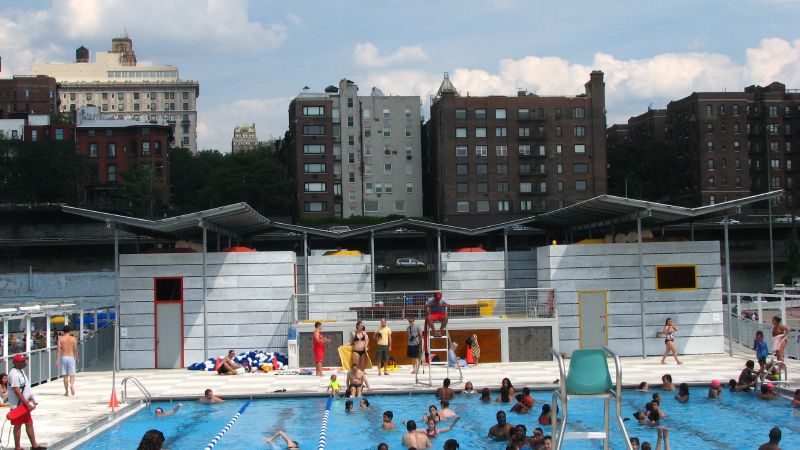
The Floating Pool, New York. Photo credit: Kevin Coles via flickr, CC BY 2.0.
This New York Times article on a reporter’s relationship with swimming is interspersed with personal storytelling and some alarming facts—including that 79 percent of children whose families make less than $50,000 a year cannot swim. The statistics are also frightening for Black and Hispanic children. The reasons for these numbers are traceable to many things, and while we know about the health benefits of swimming for people of all ages, the fact is it is also a survival skill. We’d love to hear CDCs prioritizing discussions of swimming pool access for their communities when planning new projects and partnerships, and working on solutions to questions of liability so that current and future generations can turn these stats around.
Turns out rent is in fact, racist. And not just because of the history of land ownership and credit discrimination that has led to a racial homeownership gap, with proportionally more households of color renting—we’re talking the rent itself. New research shows that Black households are paying higher rents than white households for the same homes in the same neighborhoods—and the premium gets larger in neighborhoods with more white households.
As markets heat up, Housing Choice Voucher holders are finding it harder and harder to find a landlord who will accept their vouchers, reports The New York Times. Though source-of-income protections can help, they won’t be enough if the payments offered can’t keep up with the market.
The Economist ran a pro-gentrification editorial in June that suggested marginalized populations actually benefit from the changes associated with it. EJ Toppin, a research assistant at the Haas Institute, lays out in his response how the The Economist’s piece and others overlook what are often specifically racialized dimensions of rapid neighborhood change. This is not a simple issue.
Both practitioners and the general public alike will find Miseducation, a newly-released interactive database from ProPublica useful in learning how school districts (drill down for individual school info) break down along racial, ethnic, and economic lines on things like discipline, AP class enrollment, and academic achievement. The numbers crystallize the steep uphill climb many districts face in providing an equitable educational experience for students—and seeing that there are few regions that don’t have examples of extreme disparity, it’s clear that the discussion on the nation’s public education needs to keep happening.
There are more homeless students living in New York City than there are people in Albany. Yes, you read that last sentence correctly. There were 114,659 NYC students in temporary housing as of this past spring, up from 69,244 in 2010. And the problem is bound to get worse as there hasn’t been an increase in public or private funding to address the issue.
Are state officials actually making affordable housing a priority? We’ve seen this momentum building for a while, and now it seems that even more states are getting involved in addressing housing affordability. Lawmakers are FINALLY realizing that affordable housing is a major issue, and probably because it doesn’t just affect poor people, it’s affecting the middle class and those who work in the public sector–teachers, law enforcement, and government employees. But folks who believe that affordable housing issues should be addressed at the local level do have some concerns.
With less than 20 days until midterm elections in November, we’re preparing for more stories of voter suppression. In Georgia, a report out this morning says 107,000 people have been purged from voter rolls, which comes on the heels of news that 53,000 people’s voter registrations are “pending”, and seniors were ordered off a bus that was taking them to participate in early voting. And look at what’s happening in North Dakota where the Supreme Court upheld a decision that requires a residential street address in order to vote in a state election. The move is a blow to the state’s Native American population, whose tribal land is typically a P.O. Box address. (Here’s a good compilation of what’s happening across the country.) But we must keep up the fight! If you need some help, we’ve created this graphic to show how nonprofits can get out the vote.




Comments